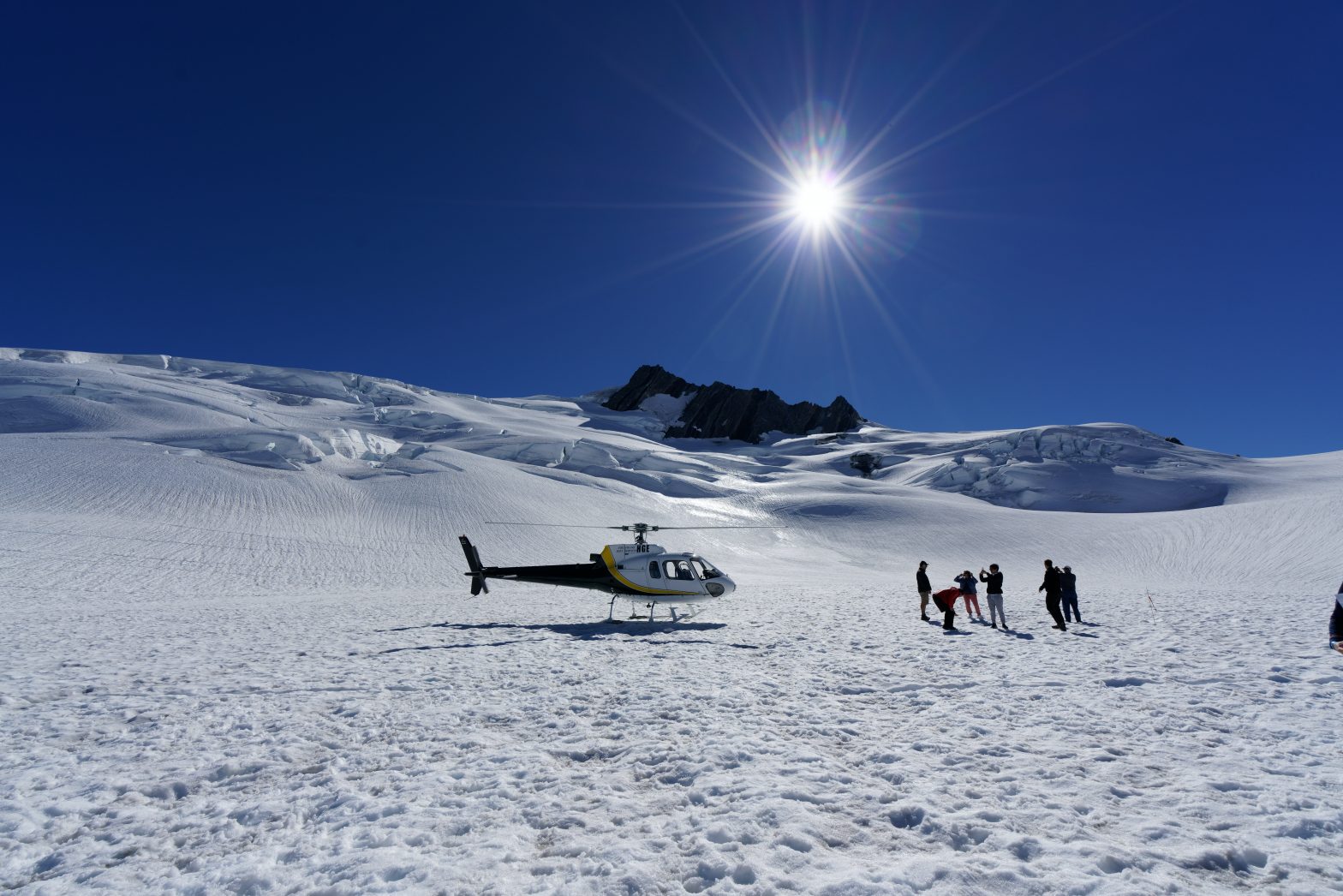Apparently, there’s an entry on many a bucket list which reads, ‘heli hike on a glacier’.
It’s not on my bucket list because I’d never even heard of heli hiking before I got to New Zealand, and once I found out about it, I wasn’t really sure how hiking on a glacier differs from slithering around trying to get to work on a snowy January day in England. So we decided to go on a guided walk to the glacier, and not on the glacier, with an expert guide to tell us all about the glacier … but from a distance.

Fox Glacier is behind us in the picture. What you can see here is the snout of the glacier – but the whole thing is 13 km long, and it’s one of the most accessible glaciers in the world. Given that you have to access it by helicopter, I can’t imagine how inaccessible all the others must be.
We learnt that glaciers constantly retreat and advance, and Fox glacier is currently in retreat, and has been since 2009. Great lumps of ice drop off the retreating glacier –

– and end up in the river where you can pick them up and marvel, or stick them in a gin and tonic.
There are all sorts of weird and wonderful plants growing beside the glacier, including the elephant killer –

– which our guide is pointing out to us here. There are no elephants in New Zealand (I’m sure I must have known that before he told us ) but several circus elephants have died after eating this plant while grazing out in the countryside, hence the name.
And the elephant killer is not to be confused with the fern –

which is:
a) the national smbol of New Zealand,
b) doesn’t kill elephants, and
c) tastes of walnuts.

These tiny young shoots are delicious, but not very filling, it has to be said.
Another national symbol is the kiwi –

– but they’re much harder to spot than this sign would have you believe. The kiwi is an endangered species and there are so few in the wild that the only place to see them is in a kiwi sanctuary. The fact that they are nocturnal birds only makes it harder to see them, because it’s so dark inside the kiwi house that you can hardly see anything at all – you can just hear rustling in the undergrowth and see a dark coloured blob at the back of the enclosure.
Anthony and I went to the kiwi sanctuary at Franz Josef Glacier – and the best view you get of a kiwi is this one –

Entrance to the sanctuary is $40, and they have two kiwis – so that’s $20 for each dark, rustling blob … not exactly a snip.
But in compensation, there are lots of other wonderful birds here, in much more plentiful supply.

This is the weka – another flightless bird – but they’re not nocturnal and there are lots of them around in the wild, so much more satisfying than the kiwi experience.
There’s also the pukeko –

– which has a little white tail that bobs up and down endearingly as it walks.
There are lots of flightless birds in New Zealand, and I started wondering why. What is the point of being a bird if you can’t fly? It looks like a serious design fault to me.
